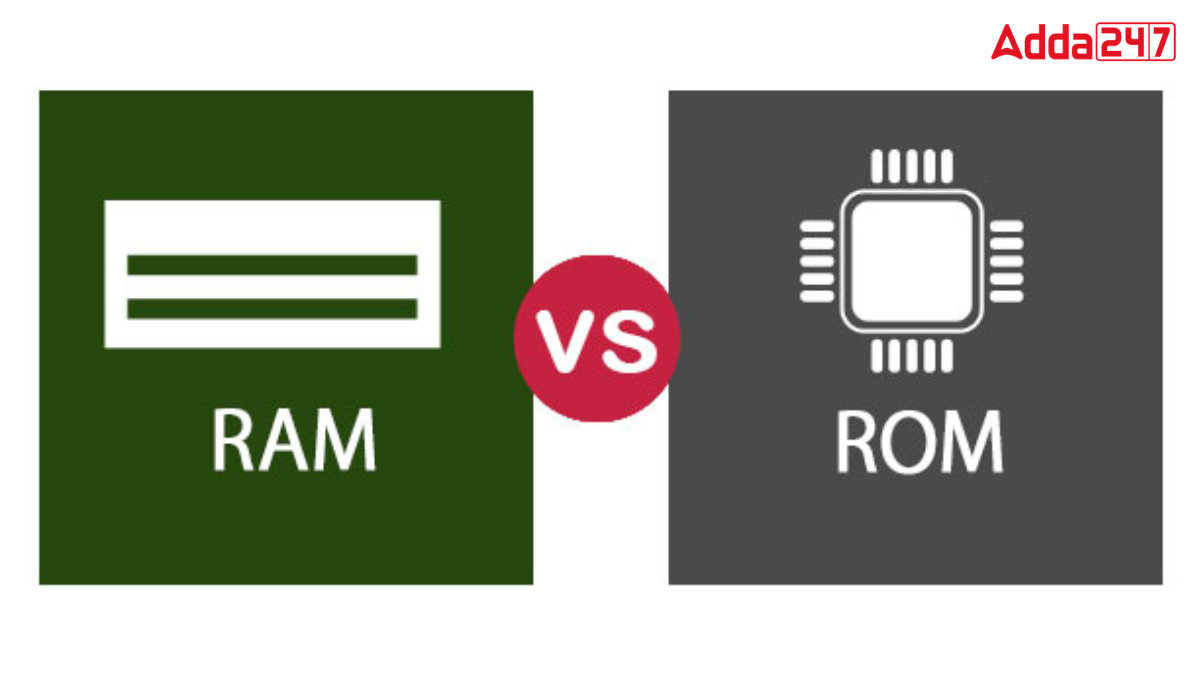In computing, RAM (Random Access Memory) and ROM (Read Only Memory) are two fundamental types of memory with distinct roles. RAM temporarily stores data for active use, making it crucial for performance speed. In contrast, ROM holds permanent information, retaining data even when the power is off. Understanding these differences helps clarify how computers manage and access memory efficiently.
What is RAM?
RAM (Random Access Memory) is a type of volatile memory used to temporarily store data that the CPU needs while performing tasks. Here’s a closer look at its characteristics:
- Volatility: RAM is volatile, which means that it loses all its data when the power is turned off.
- Speed: RAM is very fast, capable of handling gigabytes per second (GB/s) of data.
- Storage Capacity: Typically, RAM has a larger storage capacity compared to ROM, designed to handle the dynamic needs of running applications and processes.
- Cost: RAM tends to be more expensive per unit of storage.
- Power Consumption: RAM generally consumes more power compared to ROM.
Types of RAM
There are two main types of RAM:
- Static RAM (SRAM): Uses a six-transistor memory cell to store data. It is faster and more reliable but also more expensive.
- Dynamic RAM (DRAM): Uses a pair of transistors and capacitors. It is more common and less expensive but needs regular refreshing.
What is ROM?
ROM (Read Only Memory) is a type of non-volatile memory used to permanently store data. Here’s an overview of its features:
- Volatility: ROM is non-volatile, meaning it retains its data even when the power is off.
- Speed: ROM is slower compared to RAM, handling megabytes per second (MB/s) of data.
- Storage Capacity: ROM typically has a smaller storage capacity than RAM, as it mainly holds firmware and software.
- Cost: ROM is generally cheaper per unit of storage.
- Power Consumption: ROM consumes less power compared to RAM.
Types of ROM
ROM includes several types:
- Programmable ROM (PROM): Data can be written to the memory after the chip is manufactured.
- Erasable Programmable ROM (EPROM): Data can be erased using high-intensity UV light and reprogrammed.
- Electrically Erasable Programmable ROM (EEPROM): Data can be electrically erased and rewritten.
- Mask ROM: Data is written during the manufacturing process and cannot be modified.
Difference Between RAM and ROM
RAM and ROM are both vital to computing but serve different functions. RAM provides quick access to data that the CPU needs for current operations, while ROM holds critical data that must be preserved even when the system is turned off.
Here is the difference between RAM and ROM:
| Basis of Difference | RAM | ROM |
| Data storage | Temporary storage; data is lost when power is off | Permanent storage; data is retained without power |
| Read/ write | Supports both read and write operations | Primarily for reading; writing is restricted or fixed |
| Speed | Faster access (gigabytes per second) | Slower access (megabytes per second) |
| Usage | Used for active data and program instructions | Used for storing firmware and rarely changed software |
| Volatility | Volatile; loses data when power is lost | Non-volatile; retains data when power is lost |
| Types | Includes DRAM and SRAM | Includes PROM, EPROM, EEPROM |
| Modification | Easily changed by the CPU | Harder to change; requires special tools or processes |
| Capacity | Generally has larger capacity | Usually has smaller capacity |
| Cost | More expensive per unit of storage | Less expensive per unit of storage |
| Power consumption | Consumes more power | Consumes less power |




 Which is the Oldest Wooden Structure of ...
Which is the Oldest Wooden Structure of ...
 Which Country is Known as the Land of Li...
Which Country is Known as the Land of Li...
 Which Ocean is Known as the Herring Pond...
Which Ocean is Known as the Herring Pond...







